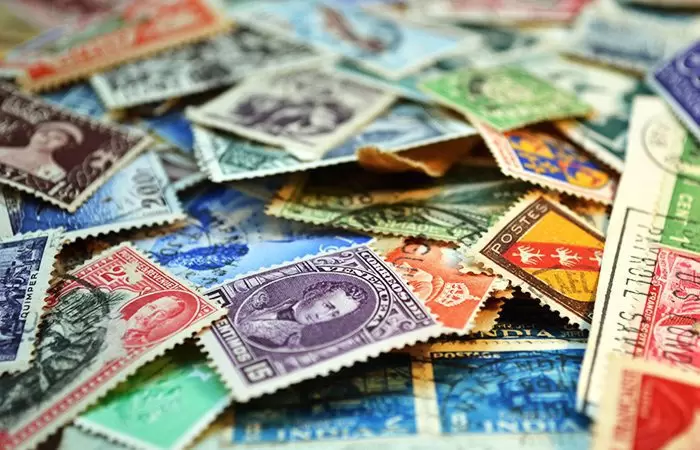
To carry out stamp grading accurately, a degree of specialist philatelic knowledge is required. But even if you enjoy collecting stamps as a hobby rather than as an investment, you can still learn about the many different factors that must be considered when trying to determine a stamp’s value.
The best philatelic experts use a defined set of criteria to conduct each postage stamp grading.
The factors to consider when grading a stamp are:
- Condition
- Gum
- Centring
- Margins
- Perforations
- Marginal details
- Faults – such as creases or tears
- Re-perforation or repair
- Colouration – fading or stains
- Cancellations
Only when an assessment has been carried out on every unique feature of a stamp can a judgement be made on its overall condition, which will then determine its value. Obviously, a stamp which is classed as a superb example will be worth more than those of lesser quality. Whilst it is important to carefully consider a stamp’s condition and its impact on price, the value of a stamp is ultimately defined by what someone is prepared to pay for it. So, if you do find an item which takes your fancy, make sure you add it to your collection before someone else does.
Are used or unused stamps best?
Gum condition: Whilst evaluating mint stamps it is important to take in to account the condition of its gum (the adhesive on the reverse).
When talking about gum, the optimum condition is for it to be in exactly the same condition as the day it was purchased from the Post Office.
Some collectors will not purchase stamps unless they have pristine gum, whilst others do not even consider the rear of a stamp when on the hunt for a new piece. Although it doesn’t matter which camp you fall into, it is worth knowing the impact that gum condition will have on price. A basic rule of thumb is: the more genuine gum which is present and the better the condition of it, the more a stamp will be worth.
Hinges: Mounting mint stamps with stamp hinges may reduce their value.
If a stamp has been hinged several times or if a hinge is still attached, the stamp’s value could be worth around 50 per cent compared to when in full ‘mint’ condition. Generally, a stamp which has clear and unblemished gum will be worth more. As condition deteriorates, its value will decline accordingly.
Stamps which are in unmounted mint condition are the most highly prized, and older stamps are obviously less likely to be available in ‘unmounted’ condition so there is a premium price attached to them.
For stamps issued after 1965, there is limited demand for mounted examples – unless they are extremely rare or very desirable sets.
Discolouration of gum: Although the presence of a hinge can dramatically affect a stamp’s price, any browning or discolouration of the gum is also significant. Stamps which have discoloured or cracked gum are worth less.
Re-gummed stamps: As unmounted mint stamps are more desirable, and are therefore more in demand, the practice of adding new gum in place of the original has developed.
Although ‘re-gumming’ is not an issue if the stamp in question is sold as such, in many cases it has been carried out to obtain a higher price.
To protect yourself from paying premium prices for an inferior piece, it is therefore essential to carefully scrutinise every edge of a ‘mint’ stamp to ensure there are no traces of gum on the surface.
Why centring is a key factor in determining a stamp’s value.
Centring is the term used by philatelic enthusiasts to describe how well the pictorial design of a stamp is positioned within the edges or perforations of a stamp.Although this element of the stamp grading process is somewhat in the eye of the beholder, most philatelists want to add stamps that are perfectly centred to their collection – making it a most important factor in a stamp’s value.When a stamp is said to be ‘well centred’ it means that all four sides of the area outside the printed pictorial design are exactly one half of the distance between two adjoining stamps.On rare occasions, a stamp with jumbo margins – where it has ‘stolen’ part of the margin area from those adjacent to it, can fetch up to double the amount it is they are usually worth.When analysing stamps which have been graded for sale, look closely at the pictures and try to judge how that dealer grades his items. If you agree with their centring accuracy, a judgment can then be made in terms of the asking price.
Wing margins: Sheets of stamps may be made up of two or more panes with a narrow gutter between them. Wing marginal stamps are those positioned on the edge of the gutter and have an extended margin on one side. Such stamps were once seen as less desirable but are now of similar value to normal stamps of the same design.
Perforations: There are two factors to consider when looking at the impact which perforations have on a stamp’s value:
Centring of the stamp’s image within the perforations: A perfect stamp should boast an equal space between the edge of its pictorial design and the perforations around it, on all sides.
Early stamps are rarely found with perfect centring because of the printing methods which were used at that time. If a rare stamp is ‘slightly off centre’ it can therefore still be classed as desirable but only if the perforations are not touching the pictorial design.
Early perforating machines were inaccurate so stamps can vary massively in size. Stamps which are ‘oversized’ can be worth a premium and often realise high prices at auction.
If a stamp’s design touches the perforations, it is worth a lower price and generally the bigger the displacement, the less it is worth. If however the displacement is extreme: the stamp may be considered a scarcer variety and be worth more as a result.
Condition of the perforations: Perforations damage easily, and if a perforation is ‘nibbled’ or slightly short, a stamp becomes correspondingly devalued. The more ‘teeth’ which are affected, the less a stamp is worth.
The term ‘pulled perf’ is used frequently in philatelic circles and means there is a gap where a perforation tooth has been pulled away. A ‘short perf’ or a ‘short corner’ means that a stamp has part of a perforation or corner perforation missing and the stamp can only command a lower asking price.
As the gauge (number of perforations) increases, the impact of short perfs on value also increases – ranging from a discount of between 20 and 50 per cent of its full ‘mint’ value.
Paying a premium for marginal details: The first British stamps came with inscribed ‘sheet margins’ which offered advice for the public about their price and where to place them on a letter.
Rare stamps with sheet margins which include a control number, plate number or printer’s imprint will greatly enhance an item’s value. For example, the highly sought-after Penny Black or Penny Red with a sheet margin might be worth between 50 and 100 per cent more than a normal ‘mint’ example.
However, in most cases, a sheet margin does not have a significant impact on the value of the stamps to which they are attached.

Faults and Damage
Any stamps which are damaged or have had their appearance altered are generally of lesser value.
There are a number of recognised faults that can affect a stamp’s value and any of the following will reduce its worth:
- Changes in colour
- Non-postal cancellations
- Thins
- Holes
- Tears
- Repairs
Depending on the severity and type of fault, a collectable stamp can still command a good price. However, the more obvious the damage is, the greater impact it will have on overall value.
Bends: Any ‘bend’ can reduce a stamp’s value by 10 or 15 per cent, even though it is usually only visible from the back.
Creases: If a ‘crease’ is clearly visible on the front of a stamp, expect it to be worth between 10 and 20 per cent of its ‘mint’ value – depending on the severity of the crease and its location on the design. A series of light creases or ‘wrinkles’ will also devalue a stamp but less significantly.
Thins: Stamps which show signs of ‘rubbing’ or a ‘thin’ area are also worth less, depending on the severity of the damage. A hinge fault is obviously less serious than a central abrasion, so the impact on value should be judged accordingly.
Perforated initials: Stamps with perforated initials, a process which was carried out to discourage theft, are now proving very popular with collectors – unlike in the past when they were viewed negatively.
Sometimes referred to as perfins they are often worth a similar amount to normal used issues.
Fading or discolouration: It doesn’t matter whether a colour change has been caused by water or sunlight, the impact on a stamp’s value is still significant. Realistically, even a highly-desirable rare stamp with discolouration is only worth up to 20 per cent of its mint value whereas more common items are almost worthless if severely faded.
Tone spots: If a stamp has a ‘tone spot’ or brown marks which disfigure its design they are of reduced value. Often this results from poor storage and highlights the importance of looking after your collection.
The more severe the toning and the more prominent the location, the less the stamp will be worth. Even a rare issue with a small spot in its centre will be devalued by around 25 to 50 per cent compared to the same stamp in fine condition. Modern stamps with toning faults effectively have no value at all.
